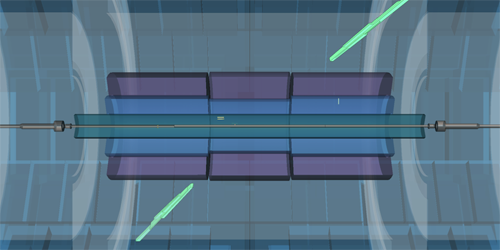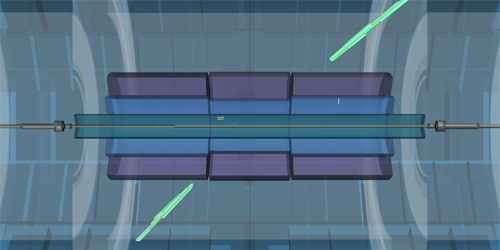Ion Collisions Reveal Photon-Photon Scattering
Classically, light does not interact with itself because it is electrically neutral. But quantum-electrodynamic theory predicts that, in some circumstances, two photons can scatter off each other. In 2017, researchers at the Large Hadron Collider (LHC) published the first experimental evidence of this so-called light-by-light scattering, but with a certainty of 4.4 sigma, just below the commonly accepted threshold needed to claim a discovery. In an analysis of lead-ion collisions measured at the LHC in November 2018, researchers at the ATLAS experiment find evidence of photon-photon scattering with a certainty of 8.2 sigma.
When ions are accelerated to high energies, a large field of virtual photons surrounds them. If two ions pass each other closely enough, a virtual photon from one particle can scatter off a virtual photon from the other. The likelihood of this scattering increases with heavier ions because the number of virtual photons surrounding an ion scales with the square of its nuclear charge. When the virtual photons scatter, the lead ions lose a small amount of energy to produce two real photons. The ATLAS Collaboration looked for the signature of these two photons striking opposite sides of the detector and confirmed their origin by reconstructing their properties
In a dataset nearly 4 times larger than that used in the 2017 investigation, the collaboration observed 59 light-by-light scattering events, compared to 13 candidate events in the earlier paper. To identify the photons more efficiently, they developed a neural network to look for candidate signals. Future studies of light-by-light scattering could confirm or constrain theories beyond the standard model, such as the existence of magnetic monopoles and axion-like particles.
–Sophia Chen
Sophia Chen is a freelance writer based in Tucson, Arizona.
This research is published in Physical Review Letters.





